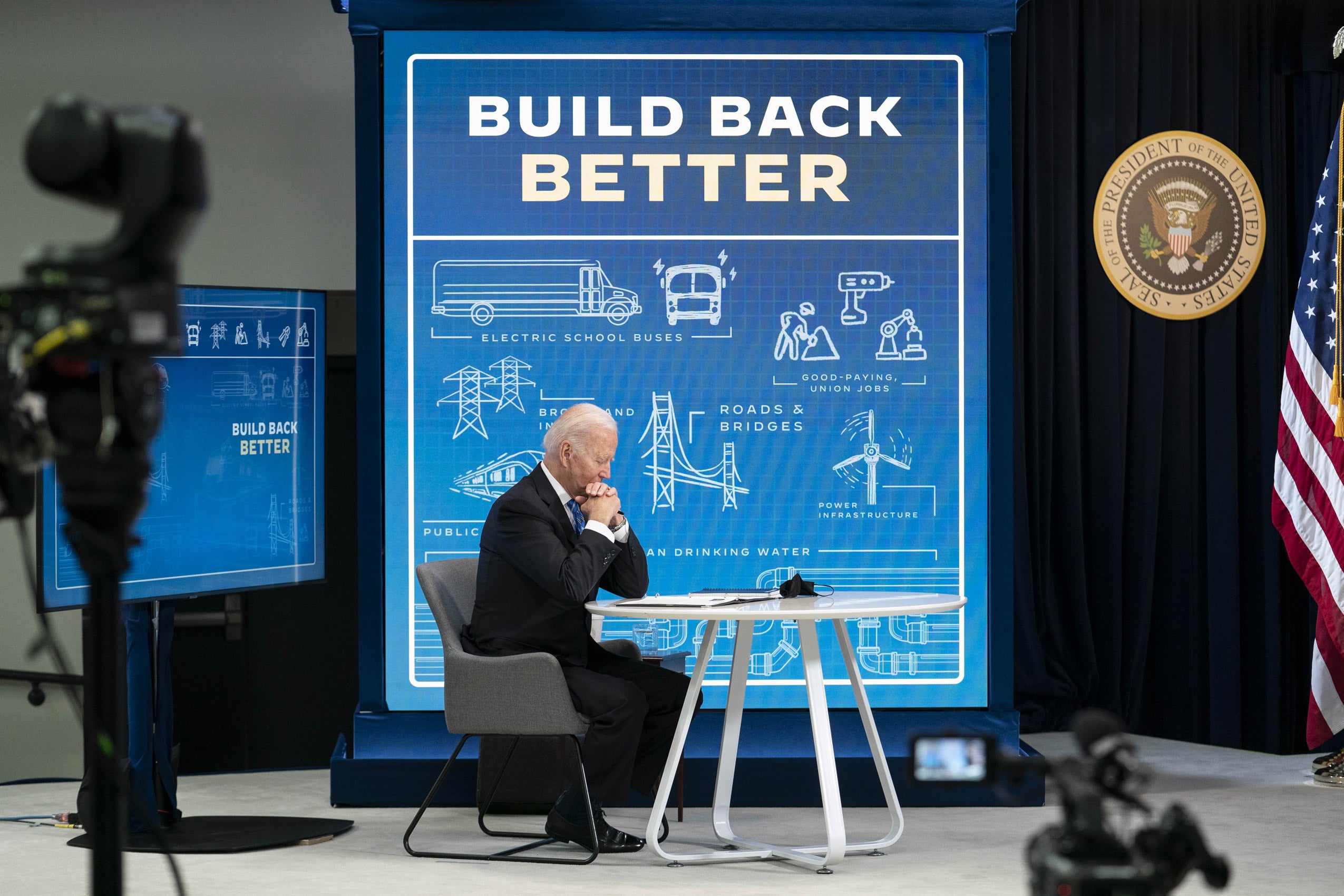As part of a series examining the first year of the Biden presidency, Harvard Law Today asked Christine A. Desan, Leo Gottlieb Professor of Law and an expert on monetary policy and the economy, to share her thoughts on the administration’s successes, failures, and agenda for the future.
Harvard Law Today: What has the administration done right so far?
Christine Desan: The Biden administration is clear-eyed about the tools it has to support well-being and productive exchange. Perhaps most striking, it is not afraid to use fiscal as well as monetary policy. Each has important distributive effects. We’ve relied on monetary policy since the financial crisis of 2008 to promote investment through the financial industry. That strategy has worked to boost capital markets but it has disproportionately benefited higher-income households whose investments there appreciated enormously. By the same token, the strategy privileged credit to those areas that are financed through the capital markets. Finally, the policy has also raised financial stability risk insofar as it encouraged corporations to increase their indebtedness and required investors to pursue riskier investments to achieve the returns they sought.
Fiscal policy allows the country to climb out of that trap. Biden’s $1.2 trillion infrastructure bill addresses a critical shortfall: our transit systems, roads and bridges, energy grid, broadband, and climate change amelioration — all need work. (The American Society of Civil Engineers gave us a C- on our infrastructure this year.) While emergency funds to individuals in 2020 staved off disaster, investment in infrastructure is forward-looking and creates good jobs. It’s a win-win that the great majority of Americans support, and Biden is right to keep pushing for more. In fact, such spending could actually be anti-inflationary insofar as it promotes economic activity and productivity.

While we’re on the fiscal point, I’d give Biden’s efforts on tax reform a shout-out, including the notion that we should augment the expertise and capacity of the IRS. We badly need to build a more equitable tax system. But even those invested in the status quo should consider how closely taxation is tied to robust markets. Historically, it is exactly those governments that create public demand for their currency with strong revenue systems that become financial juggernauts — the U.K. in the 19th century, the U.S. in the 20th century. It may sound counter-intuitive, but we can kill our market order by undermining the IRS.
Circling back, the administration is oriented to using both monetary and fiscal policy (taxing and spending) to support equitable development, augment financial stability, as well as tackle problems like inflation. His recent nominations to the Fed’s Board (Lisa Cook, Philip Jefferson, and Sarah Bloom Raskin [’86]) suggest that he’s interested in a diverse staff contributing to the policy mix.
The administration has also taken some steps to address the racial wealth gap and race-based disparities. It re-started the state small business credit initiative (SSBCI) with a set-aside for socially and economically disadvantaged entrepreneurs and tribal communities, as well as priority for micro-businesses which are often owned by people of color. The program works by using federal capital to leverage private funds at up to 10:1, multiplying the bang for the federal buck.
The administration is oriented to using both monetary and fiscal policy (taxing and spending) to support equitable development, augment financial stability, as well as tackle problems like inflation.
The program brings us back to the impact of the current banking network because it depends on states having community bank and community development finance institutions (CDFIs) that can reach small entrepreneurs inclusively. The administration has moved to strengthen those institutions with another program that infuses capital into CDFIs and minority-owned banks. There’s also a good provision in the infrastructure bill to reconnect neighborhoods, often communities of color, separated by old highway projects. On the other hand, these measures are just a start; we need much more progress elsewhere, for example on revising the Community Reinvestment Act.
HLT: What has it gotten wrong?
Desan: On the subject of existential crises, we are perennially behind the ball on climate change, a matter that itself disproportionately affects underserved and minority communities with flooding, land loss, and heat-related dangers. A recent study found that federal, state, and local governments contributed only ten percent of U.S. climate finance. There are some promising developments here, including the administration’s movement to assess the damage caused by greenhouse gases more accurately, a reform that could increase returns on green infrastructure projects. But the scale of the problem we face requires action that is far bolder. A student of mine recently suggested federal innovation modeled on the National Housing Act of 1934 or the Farm Loan Act of 1916, legislation that used federal authority to create markets for mortgages that reduced the risks for investors in those sectors and could be used analogously to create markets for green bonds. There are at least four bills in Congress proposing federal green banks that would great expand funding, including loans, guarantees, and equity financing. It’s unclear, however, how that funding might be conditioned and how far it would extend. And as we all know, in a Congress so closely divided, the power of the fossil fuel industry has stymied essential movement.
Moving from the profound to the prosaic level, the administration also has to move forward on its appointments — it’s the people on the ground who make the monetary and banking system operate, including at the Office of the Comptroller of the Currency and the Federal Deposit Insurance Corporation. The most vigorous appointees so far at work are not in the bank regulatory realm but at the SEC (Gary Gensler) and the CFBP (Rohit Chopra), and the FTC (Lina Khan), while the OCC lost a tremendously talented and creative candidate in Saule Omarova, widely lauded by her peers in the fin reg world. But I’d now qualify this with the news of Sarah Bloom Raskin’s nomination; she would bring great insight to the supervisory post on the Board, while balancing out Biden’s more conservative decision to stick with Jerome Powell as chair.
HLT: What has the administration not addressed yet that it should?
Desan: In 2021, some $15 trillion worth of crypto assets changed hands, according to a recent article in the Financial Times. That included a 79% rise in the amount of theft, ransomware, and illicit activity. Market activity in the area expanded so substantially, however, that total criminal activity actually fell as a proportion. Fascinating, but not, to my mind, a sign that the area is working well. Both the absolute amount of scamming and the sheer dimension of market activity in the area flag it as an area that carries great risks. That’s true for individual investors given the volatility and opacity in crypto assets. And it’s true for us as a society for a host of reasons. The President’s Working Group issued a report in November that identified stable coins as posing a number of systemic dangers. Stable coins, which are generally used to facilitate exchange in other digital assets, promise 1:1 convertibility into sovereign currencies. Imagine, however, a run on those currencies if people began to doubt the value of the assets that backed them. That’s the kind of danger that we work hard to prevent in the banking sector, and need to confront in the crypto area. The Biden administration has now to make a whole set of decisions about how responsibility will be parceled out between the SEC and the Commodity Futures Trading Corporation, and the FDIC, which would oversee stable coins if they were issued by depository institutions.
We are perennially behind the ball on climate change, a matter that itself disproportionately affects underserved and minority communities with flooding, land loss, and heat-related dangers.
Lastly, I’d argue that the Biden administration should think in more visionary terms about our monetary infrastructure. Finance has channeled its benefits upwards; recent studies suggest that the industry is claiming significantly higher profits without increased efficiency. At the same time, the financial architecture has required great infusions of cash from the public twice within the last two decades — once when it broke of its own weight in 2008 and next when it struggled to digest an external shock that came with COVID-19. There are some powerful reform ideas out there that aim at both the inequitable aspects of the system and its structural vulnerability to instability.
“FedAccounts” would offer individuals a public option for banking: digital accounts at the central bank would create access to banking services for Americans, about a third of our population, who are unbanked or underbanked; reduce their need for predatory services; and stabilize the banking system by reducing its role in money creation. Postal banking could dovetail with that idea, delivering services at the locations that are as familiar, trusted, and widely diffused as the post office. The Biden administration should also support initiatives that establish state and municipal public banks. Those entities can diversify the credit allocation and recycle the profits of public revenue into local communities.
There’s a theme here: we should be looking at ways to innovate towards monetary and financial structures that have democratic legitimacy, that are inclusive, and that return benefits widely to the communities that support them.
Read the series Weighing President Biden’s first year
